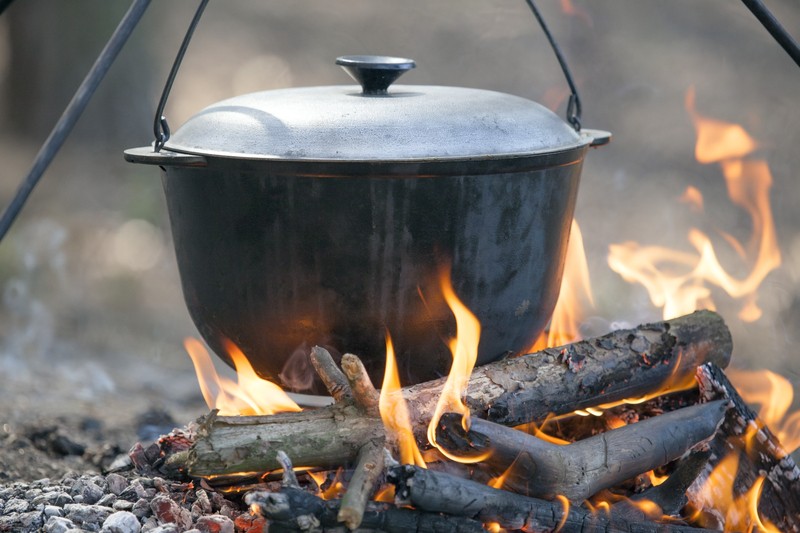We're about to share everything you need to know about the Dutch Oven. If you've been thinking about using this oven at your homestead or during your off grid excursions, keep reading. You're about to learn everything you need to know about the Dutch Oven!
When you purchase a new Dutch Oven, you must first season it to prepare for the journey ahead. Seasoning has a double role: it protects it from rust and creates a non-stick cooking surface.
To do so, first build a good hot fire that will provide you with lots of coals. Place the oven in the coals and heat it until it no longer smokes. You have to keep it in the coals until it changes color. This step is mandatory as it removes the protective anti-rust oils that manufacturers put on it.Take the oven off the fire and let it cool for at least 20 minutes. Never try to fast cool it with water because your Dutch Oven may crack under extreme temperature changes. When the oven is cool, grease the entire surface inside and out with a thin coat of vegetable oil. Place it in your regular kitchen oven at 300 to 350 degrees for up to 60 minutes. Remove from the oven while warm and pour out any excess grease and carefully wipe it with a paper towel. You are now done with the seasoning process and the oven is ready to be used.
When you use your Dutch Oven for the first few times, start by cooking low moisture foods like chicken and potatoes. Avoid stews or cobblers at first since the pores of the cast iron are not properly sealed. There is a need for a few heat cycles and coatings of vegetable oil to seal the pores. Old timers know that cast iron cookware improves with age and use. Do not cook acidic foods like tomatoes unless you combine them with other foods. This will prevent rust and metallic tasting food.
Dutch ovens are great survivalist tools and it makes sense owning one. You don’t have to be an avid camper to own a Dutch Oven and many people use it to remember the ways of the past. Dutch ovens require about half the number of coal or briquettes that a normal barbecue grill does. Even if it may take longer than modern cooking methods, nothing beats Dutch Oven cooking. Everyone agrees that food cooked in a Dutch Oven tastes better. You can enjoy roasts, steaks, stews, soups and casseroles in the great outdoors, but also in your own backyard. Look for cast iron cookware at yard sales and flea markets and I guarantee you will not regret purchasing a Dutch Oven.
Have you ever had the experience of cooking with a Dutch Oven? From the sound of it, everyone loves their Dutch Oven for a reason. It's an excellent way to cook your food and food may even taste better if you use it! It's also easy to cook a variety of foods in a Dutch Oven, so it's time to get cooking!
Source: Prepper's Will

That’s not how I Dutch oven.
How I miss my dutch ovens. We used to use them at home and camping. We also sold Lodge ovens.
How do you Dutch oven , in the coals ?
No, in the sheets.
Heather Viola
Joshua Nance
One pot is too close to the fire !
Paula Lloyd
Following